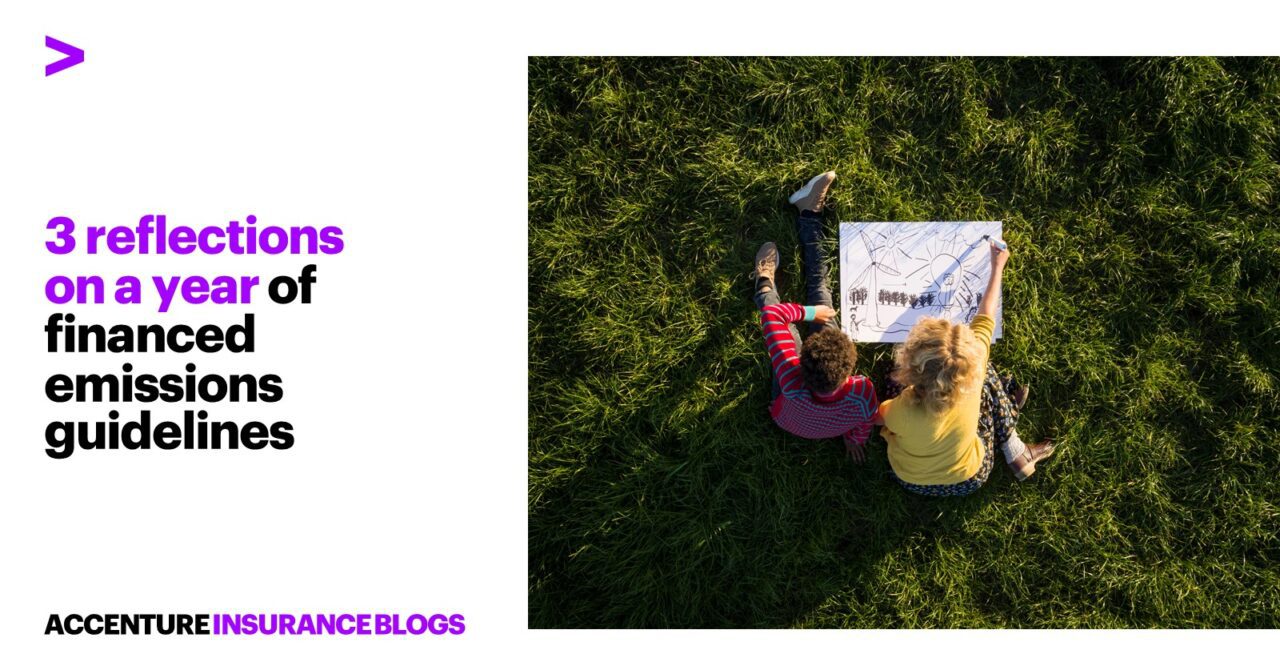3 reflections on a year of financed emissions guidelines

As the Science Based Targets initiative (SBTi) guidance for financed emissions celebrates its first anniversary, we want to share three reflections from this very busy year of working with our Insurance and Banking clients on their net-zero targets.
Highlights
1. The overall concept works: We applaud the standard setters (especially PCAF and SBTi) and industry practitioner group founders (especially GFANZ) who found a way to elevate Financial Services organizations as stewards of the net-zero progress in other industries. They are making emissions a new hard currency to take into account.
2. There is no one size fits all: While the science stays the same, the application in each organization is unique. We have seen everything from a top-down three-month diagnostic to multi-year bottom-up work engaging a wide array of internal stakeholders across industry sectors and business units right away.
3. The toughest part is yet to come: While the current baselining and reduction target calculations are already perceived as a heavy lift, the devil is and will be in the details of the implementation of real reductions beyond these commitments. Yet only this will bring us the desired impact for the climate, so we need to shift attention to this operationalization.
Let’s celebrate the concept of financed emissions!
COP26 ushered in the green tipping point with 40% of global assets under management committed to net-zero. It makes insurers, borrowers, and investors accountable for the emissions of their investments and clients and uses their influence over all other industries for good. In fact, it establishes the financial sector as powerful new stewards for net-zero alongside the public sector.
Financial institutions have three key levers they can use:
growing with the champions of the green transition
potentially not renewing clients that don’t make an effort to progress
most importantly, engaging the existing client and investee base (i.e., not just playing “carbon chess”)
Engagement requires the frontline to judge and advise on industry-specific decarbonization plans and come up with new ways to finance them. It offers insurers and banks a way to move beyond the transactional to a new level of relevance and partnership with their commercial clients. It also means there is a lot at stake for client companies, and they—as much as the insurer and bank—need to craft solid transition plans. Emissions become a hard currency according to CROs we worked with.
Take an approach that fits your organization
Our second point is about this careful crafting of emissions baselines and transition plans. Indeed, a wide range of approaches exist when starting the net-zero agenda, from top-down centrally organized roadmaps to bottom-up ones that immediately involve key affected teams within the organization. The former is quicker, and gives a great overview and starting point, but more detailed work and stakeholder engagement must follow. The latter involves the stakeholders needed for the transition from the beginning. While it may help prevent the “not invented here” syndrome, it bears the risk of overwhelming the organization, especially when enablers like training and data infrastructure that are built-in parallel are not fully available yet.
The toughest part is yet to come
Even if an organization chooses the bottom-up approach, the implementation will pose challenges. In order to achieve net-zero by 2050 or sooner, deep cuts in emissions are necessary which require most of the institution’s transition energy: broad upskilling initiatives, a reliable data infrastructure, and change of existing processes.
For example, when an insurer makes the decision to stop coal investments, this decision needs to be integrated in the data gathering, investment decision processes, frontline enablement, and incentive adaptation. It is crucial to not lose momentum after the first-time emissions reporting exercise, but to really build the tools to follow through.
We look forward to hearing your progress and observations on this first year of financed emissions guidelines and to continue driving forward with you in the years ahead!
Get the latest insurance industry insights, news, and research delivered straight to your inbox.
STANDARD DISCLAIMER:







